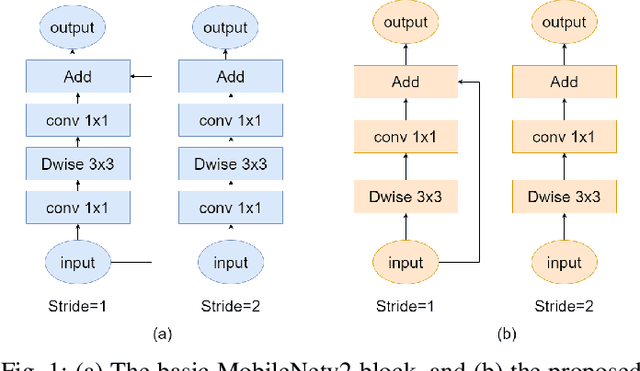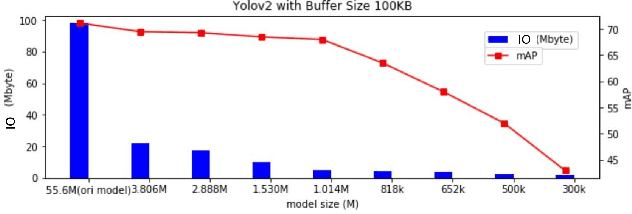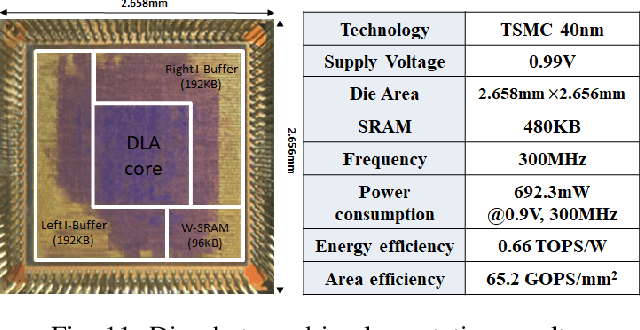A Real Time 1280x720 Object Detection Chip With 585MB/s Memory Traffic
Paper and Code
May 02, 2022



Memory bandwidth has become the real-time bottleneck of current deep learning accelerators (DLA), particularly for high definition (HD) object detection. Under resource constraints, this paper proposes a low memory traffic DLA chip with joint hardware and software optimization. To maximize hardware utilization under memory bandwidth, we morph and fuse the object detection model into a group fusion-ready model to reduce intermediate data access. This reduces the YOLOv2's feature memory traffic from 2.9 GB/s to 0.15 GB/s. To support group fusion, our previous DLA based hardware employes a unified buffer with write-masking for simple layer-by-layer processing in a fusion group. When compared to our previous DLA with the same PE numbers, the chip implemented in a TSMC 40nm process supports 1280x720@30FPS object detection and consumes 7.9X less external DRAM access energy, from 2607 mJ to 327.6 mJ.
 Add to Chrome
Add to Chrome Add to Firefox
Add to Firefox Add to Edge
Add to Edge